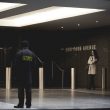Fiber optics help Anaheim get connected
When it came time for Anaheim, Calif, to replace the aging copper wire that linked its 12 electrical substations and water-pumping facilities, the city chose a state-of-the-art, looped fiber-optics system.
The new system will be able to monitor power demand and supply on the city’s grid, provide high-voltage power protection, report pumping equipment start-ups and failures and otherwise track operation of electrical and water-pumping facilities.
In the future, the digital telecommunications system (DTS) can be expanded to provide complete telecommunications services to the city’s businesses and residents.
Holmes & Narver, Orange, Calif., which designed the DTS, is expected to complete installation of the $6 million project by the summer of 1997. Data from each facility will be monitored constantly at one major substation and relayed to City Hall.
“The DTS will use SONET technology to transport voice, data and telemetry from the various monitors at the 12 facilities,” says Vishwa Tiwari, principal telecommunications engineer for the city. “The system will improve the reliability of our information gathering and the overall efficiency of electric and water distribution.”
The city needed only 12 fibers to meet requirements for monitoring substations and water pumping. However, as ideas for future expansion took hold, the number of fibers in the network’s design increased to 96, about eight times the capacity required for monitoring purposes.
The city’s plans now include more than 50 miles of fiber-optic cable to form the network’s backbone. The extra capacity can be used to offer a diverse array of communications services to businesses and residents.
“Since the linked facilities are dispersed throughout the city, the cable can be easily accessed from anywhere within city limits,” Tiwari says. “That makes it possible for the department to recoup its initial investment in the DTS by leasing or otherwise using the extra capacity.”
For some businesses, the fiber-optic network could also lower energy costs by making possible demand-side management and energy-efficiency programs like time-of-use metering and automated meter reading.
City residents might use the system for cable, computer and other personal or home-business applications.
Planners in Anaheim recognized that unregulated development of the system’s capacity could cause excessive street cuts, disruption of traffic and business and less-than-optimal deployment of many potential telecommunications services.
Therefore, a task force was formed to establish standards and guiding principles for development of the system.
The task force recommended that the city’s development plan (1) minimize disruption to public property and ensure efficient use of streets; (2) ensure reliable telecommunications services at the lowest cost to residents and businesses, universal access and interconnectivity and the maximum number and variety of services; (3) enhance the city’s economic development programs; and (4) provide for fair compensation for the use of public property and city participation. These recommendations will act as guiding principles in future contract negotiations.
The task force also determined that the private sector was very interested in entering into a public/private partnership to develop the universal fiber-optic network.
An RFP elicited 28 responses from companies, and the city is now in the process of selecting a partner. It is anticipated that work will begin on the universal network by the spring of 1996.




















